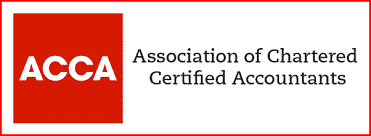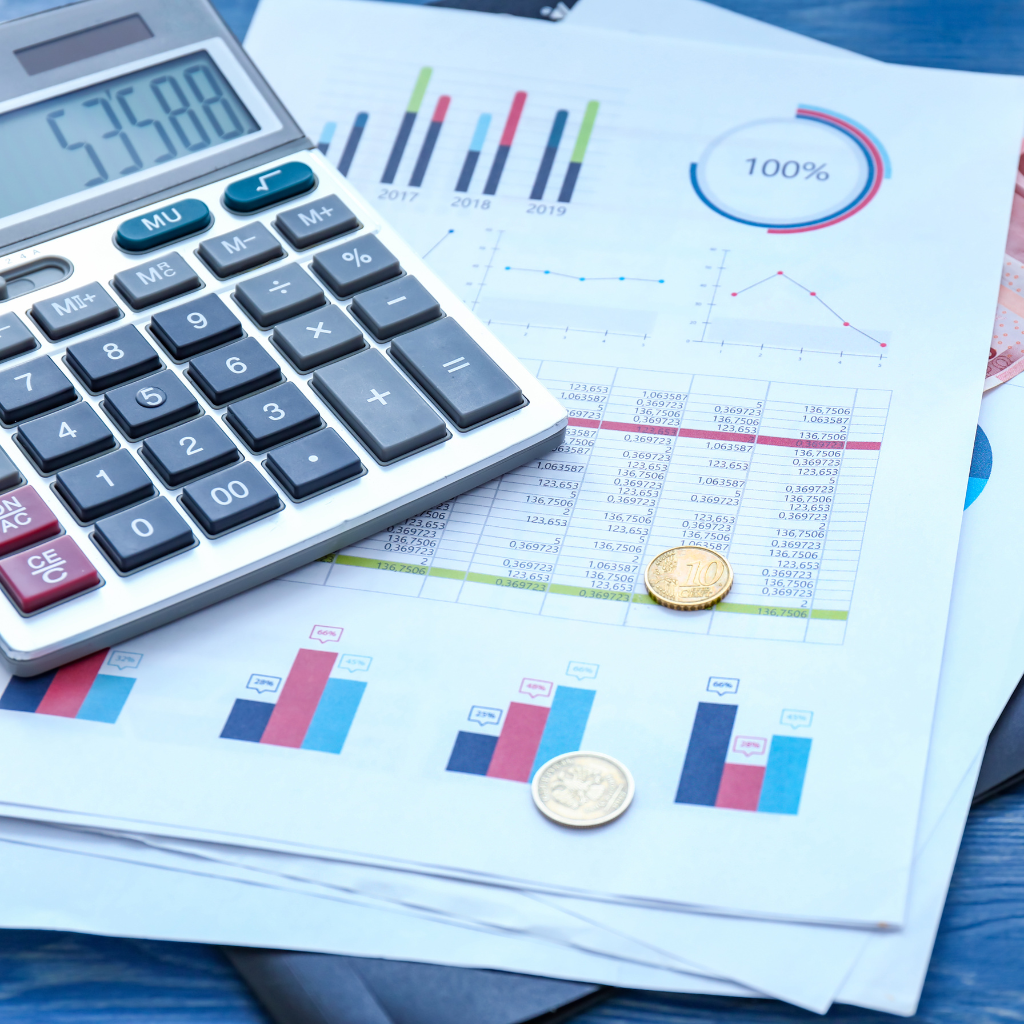Goodwill in Accounting: Meaning, Valuation, and Why It Matters
Many people scratch their heads over the concept of “what is goodwill in accounting.” It’s a phrase you’ll hear banded about when businesses change hands or come together. The befuddlement isn’t out of place.
Goodwill stretches beyond a firm’s good name; it stands as an essential item on the balance sheet, though it’s a bit of a puzzle to wrap your head around.
We’ve encountered these hurdles ourselves and plunged into research to illuminate this subject. You might find it intriguing that goodwill only shows up following an acquisition. Our discoveries aim to demystify how valuation, calculation, and accounting principles circle goodwill.
We’re here to offer insights that make this complicated topic more approachable for everyone. Fancy some clarity?
What is Goodwill in Accounting?
Goodwill in accounting stands out as an intangible asset that emerges when one company acquires another company b or for a price higher than the fair value of its net identifiable assets and liabilities.
This excess amount reflects elements like customer loyalty, brand reputation, employee relations, and patents that do not appear visibly on financial statements but are crucial for the business’s success.
We at Royston Parkin recognise goodwill as a critical factor that can significantly influence a company’s balance sheet and overall valuation.
Goodwill represents future economic benefits arising from assets acquired in a business combination that are not individually identified and separately recognised.
Calculating goodwill involves subtracting the fair market value of tangible assets, identifiable intangible assets, and liabilities obtained in the acquisition from the total purchase price paid.
Understanding this concept helps businesses in Doncaster gauge their true worth beyond physical assets, offering insights into their market position and competitive advantage over others.
How is goodwill different from other intangible assets?
Goodwill stands out from other intangible assets due to its unique nature. Unlike patents, trademarks, or copyrights that a company can buy separately, goodwill only comes into play during an acquisition.
It is the excess value that we pay over the book value of net assets when acquiring another business. This includes elements like customer loyalty, brand reputation, and employee relations – aspects you cannot touch or see but have great value.
We calculate goodwill by taking the purchase price of a company and subtracting the current market value of its identifiable assets and liabilities. The result reflects something extraordinary: the premium paid for future economic benefits stemming from unidentifiable assets not recorded on the balance sheet individually.
Other intangible assets usually appear as separate items based on their fair market values. However, goodwill emerges solely through acquisitions and represents a more holistic view of a company’s worth beyond fair value adjustments to its physical and identifiable intangibles.
Why is goodwill considered an intangible asset?
Goodwill is an intangible asset representing non-physical qualities that add value to a company, such as reputation, customer loyalty, and brand strength. Unlike tangible assets, it reflects the extra worth of a business above its net asset value.
This includes factors like customer base, brand recognition, and employee relations, which help a business generate future cash flows.
Goodwill appears as an intangible asset on the balance sheet after an acquisition, reflecting the excess purchase price paid for elements like market position or future earnings potential. It is assessed for impairment rather than amortized, in line with GAAP and IFRS.
When does goodwill arise during an acquisition?
Goodwill emerges during an acquisition when we purchase another company and pay more than the fair value of its net identifiable assets. This excess payment reflects the value of the business beyond its tangible assets, capturing elements like brand reputation, customer loyalty, and proprietary technology.
Essentially, it represents the future economic benefits we expect to gain from acquiring the company.
Goodwill is a critical asset that reflects the premium paid over the target company’s tangible net worth.
Moving on, understanding how goodwill is calculated becomes essential for accurate financial representation on our balance sheets.
How is Goodwill Calculated?
Calculating goodwill accounting involves comparing the purchase price of a company to the fair value of its identifiable assets and liabilities. We start by identifying and valuing all assets that a business owns, which could include property, intellectual property, capital, and customer relationships.
We then subtract this net asset value from the total cost paid to acquire the company. The figure we end up with represents goodwill. This amount reflects non-tangible elements like brand reputation or customer loyalty that aren’t accounted for elsewhere on the balance sheet.
For example, if a business is bought for £500,000 and the net fair value of its net identifiable assets is valued at £400,000 after the subtraction of liabilities, then we calculate goodwill as £100,000 (£500,000 minus £400,000).
This calculation captures what’s paid over and above tangible items; essentially, it’s what makes a business worth more than just its physical assets.
What is the role of fair value in calculating goodwill?
Fair value plays a crucial role in determining the amount of goodwill during acquisitions. We use fair value to measure the actual worth of a company’s identifiable assets and liabilities at fair current market value at the time of purchase.
This approach ensures that we capture all the assets’ actual economic value rather than just relying on book values, which might not reflect current market conditions. It involves assessing each asset and liability to determine its saleable price if it were trade secrets in an open market.
Once we establish these fair values, we subtract them from the total purchase price paid for the acquired company. The difference from the actual purchase price gives us the value of goodwill. This figure represents intangible elements like brand reputation, customer loyalty, and employee relationships that do not appear directly on financial statements but contribute significantly to a business’s worth.
Calculating goodwill this way aligns with accounting standards and provides a more accurate reflection of an acquisition’s impact on balance sheets.
Steps to calculate goodwill in accounting
In our practice at Royston Parkin, we frequently find ourselves calculating goodwill of accounting. This process plays a vital role for businesses during acquisitions, helping them understand the unseen value for which they are paying.
- We identify and aggregate the fair market values of recognisable assets acquired, both tangible and intangible, like intellectual property, patents, and trademarks.
- We quantify the total liabilities accompanying the acquisition, including loans or debts owed by the acquired firm.
- The total liabilities are then subtracted from the total recognised assets’ value to arrive at the value of the net identifiable assets.
- The acquisition’s purchase price is then determined, representing the overall amount your company has committed or will commit to acquiring another business.
- The value of net identifiable assets is then deducted from the acquisition’s purchase price. The resulting figure is the value of goodwill.
Let’s consider this example. Let’s say a business acquires another company for £500,000, and after valuing all identifiable assets and deducting liabilities, we arrive at a net asset value of £400,000, the goodwill then is valued at £100,000 (£500,000 – £400,000).
Approaching these calculations with extreme caution is crucial, as goodwill is an intangible asset reflected on your balance sheet, influencing the outcomes of your financial statements. Handling calculations such as assets minus liabilities with precision ensures that we accurately depict an unseen but essential aspect of a company’s worth that influences its overall evaluation.
We conscientiously follow this process when accounting for goodwill in our clients’ financial documentation to uphold accuracy and compliance with generally accepted accounting principles (GAAP). Whether it’s local individuals, small businesses or large corporations in Doncaster, comprehending and implementing these principles enables us to manage their accounts efficiently whilst offering valuable insights into their genuine financial status.
A real-world example of goodwill calculation
Consider the acquisition of ABC Ltd by XYZ Corp as a tangible example of goodwill calculation. XYZ Corp paid £500 million for ABC, whose net identifiable assets at the time were valued at £450 million.
To determine goodwill, we subtracted the value of these assets from the purchase price, resulting in £50 million classified as goodwill on XYZ’s balance sheet. This figure represents intangible benefits like customer loyalty and brand reputation that XYZ gained.
Goodwill reflects more than just physical assets; it encapsulates the true essence of a company’s value.
Moving on to understanding different types of goodwill will further clarify why this aspect is critical in acquisitions.
What are the Types of Goodwill?
We find two main types of goodwill in accounting: inherent and purchased. Inherent goodwill comes naturally with a business due to its reputation, location, or customer loyalty. It is not bought or sold but built over time.
Purchased goodwill appears when one company acquires another for more than the value of its tangible and identifiable intangible assets. This type reflects the premium private companies pay for brand recognition, skilled workforce, and potential future earnings.
Besides these, we distinguish between business goodwill and personal goodwill. Business goodwill ties to a company’s overall value beyond its physical assets—it can involve patents, proprietary technology, or market position.
Personal goodwill relates to an individual’s business influence—for example, a professional with a substantial client following in their sector contributes personal goodwill if they were part of an acquisition deal.
Differences between inherent and purchased goodwill
In our industry, we distinguish between inherent and purchased goodwill. Inherent goodwill is the value a business naturally builds over time through reputation, customer loyalty, and brand strength. It grows with the company but can’t be bought or sold.
Purchased goodwill arises when a company acquires another for more than its tangible and identifiable assets. The extra cost reflects intangible assets like customer base, brand strength, and future earnings potential.
In accounting, inherent goodwill isn’t recorded since it’s not part of a transaction. Purchased goodwill, however, is capitalized as an intangible asset on the balance sheet after an acquisition.
When a business buys another at a price above its net asset value due to its market position or customer relationships, that additional amount is recorded as purchased goodwill on the balance sheet, giving these intangible qualities tangible recognition.
How is Goodwill Recorded on the Balance Sheet?
Goodwill appears as an asset on the balance sheet when a company purchases another business for more than the fair value of its identifiable assets and liabilities. This excess amount reflects the non-physical assets, such as brand reputation or customer loyalty, known as goodwill.
Companies list it under intangible assets on the acquirer’s balance. Recording goodwill in this way shows investors that part of what they bought has significant unquantifiable value, which might benefit the entire business in the future.
Negative goodwill arises if a company pays less than the fair value of the acquired business’s net assets. This scenario usually leads to immediate profit recorded on the financial statements because it indicates a bargain purchase was made.
Our approach ensures we record and manage both positive and negative goodwill accurately for our clients, helping them understand their true financial position post-acquisition. We focus on clear explanations and straightforward accounting practices to ensure local people, small businesses, and more giant corporations comprehend how these transactions impact their balance sheets.
Why is goodwill listed as an asset?
Goodwill secures its spot on the balance sheet as an asset. Why? It symbolises a company’s brand name worth, customer loyalty, and overall market value standing; the things that are difficult to put a number on.
These non-tangible elements contribute to higher profits and a solid competitive advantage over competitors. Goodwill is noted after acquisitions, representing the excess amount of consideration paid over the fair market value of recognised assets.
This accounting method echoes our conviction in the prospective future benefits of these merged businesses.
Our method makes sure that we present a company’s actual worth accurately by factoring goodwill into net assets on financial reports. It conveys to shareholders and investors that part of their investment lies in the strong reputation and customer base of the target company—factors vital for long-term success but not easily observable among physical assets or immediate financial data.
Through this approach, goodwill solidifies confidence in both current performance and future potential by providing a more thorough evaluation of a company’s valuation beyond merely its physical resources.
Where does goodwill appear on a company’s balance sheet?
Recognising goodwill as an asset leads us directly to its placement on the company’s balance. Companies usually list this intangible asset under non-current net assets, specifically within a section earmarked for intangible assets.
This positioning highlights the enduring value of goodwill to the business and aligns with accounting principles that dictate its treatment over time.
On a balance sheet, you’ll find goodwill amidst other long-term investments that contribute to the company’s overall worth but lack physical form—in contrast to buildings or machinery.
It reflects the excess amount paid over the fair market value of identifiable net assets acquired during an acquisition, embodying potential future benefits arising from unidentifiable assets like brand reputation or customer loyalty.
What is Goodwill Impairment, and How is it Handled?
Goodwill impairment happens when the value of goodwill on a company’s balance sheet falls below its recorded amount. We check this through a goodwill impairment test, which the Financial Accounting Standards Board (FASB) mandates.
This process involves comparing the asset’s fair value with its carrying amount on the balance. If we find that the fair market value is less than its book value, we recognise an impairment loss.
This loss is reflected in our consolidated financial statements, directly impacting profit and equity.
We follow specific steps to manage goodwill impairment effectively. First, we assess any indicators of impairment annually or more frequently if events suggest that it might have decreased in value.
Then, we calculate its current assets fair value and compare it with its carrying amount on the books. Should there be a decrease, we must immediately record this as an expense on our income statement, which reduces net income for that period.
Moving onto what limitations goodwill faces in accounting next will help understand why these impairments can significantly affect how stakeholders view a company’s financial health.
Steps to test for goodwill impairment
We understand the complexity of testing goodwill impairment and its critical role in maintaining accurate financial statements. Here’s our guide to simplifying this process for businesses and corporations.
- Identify the reporting unit: Start by determining which part of your business will undergo the goodwill impairment test. A reporting unit can be a segment or one level below an operating segment.
- Compare carrying amount to fair value: Assess the total assets and liabilities of the reporting unit, including recorded goodwill, to determine its carrying amount. Then estimate the fair value of the unit using market value data or discounted cash flows.
- Determine if impairment exists: If the carrying amount exceeds the fair value, it indicates that goodwill might be impaired. This step identifies whether an impairment loss needs calculation.
- Calculate impairment loss: Measure the amount by which the carrying amount exceeds the reporting unit’s fair value. This figure represents your impairment loss, subject to adjustment based on any previous losses recognised.
- Record the impairment: Finally, adjust your financial statements to reflect this change, decreasing both your goodwill asset and overall equity on your balance sheet.
Following these steps helps ensure an accurate representation of goodwill’s value in accounting records and complies with Generally Accepted Accounting Principles (GAAP).
What are the Limitations of Goodwill in Accounting?
One of the biggest challenges in accounting for goodwill is its valuation. Unlike fixed assets, which are appraised based on physical condition and market value, goodwill is more abstract and harder to quantify.
Goodwill arises from factors like brand name reputation and customer loyalty, making its value difficult to calculate. During an acquisition, it’s the difference between the purchase price and the fair market value of assets, often requiring subjective judgment about potential future benefits.
Additionally, goodwill doesn’t always reflect a company’s true worth. A high goodwill figure on the balance sheet doesn’t guarantee financial health or profitability.
Goodwill can inflate a company’s value if not assessed properly. Negative goodwill, where a company is purchased below fair market value, requires adjustments and complicates financial analysis, impacting share prices and equity finance.
Challenges in the valuation of goodwill
Goodwill valuation poses multiple challenges in the accounting field. This is due to the intangible nature of goodwill, which renders its valuation arduous and often subjective. We must evaluate the prospective advantages a company anticipates from a purchase, which is not always straightforward.
Market conditions, customer loyalty, and brand awareness all influence the value of goodwill but fluctuate with time. These elements complicate assigning a specific value to goodwill.
Another issue we encounter is adhering to generally accepted accounting principles (GAAP) while establishing the value of assets, such as goodwill, in a balance sheet. The practice requires uniformity and precision, yet the intrinsic unpredictability around future profits and possible synergies complicates this.
Every business possesses distinctive features that add to its value beyond tangible assets—translating these accurately into financial terms necessitates astute judgment and experience.
Conclusion
We comprehend the significance of goodwill in accounting and how it profoundly affects a business’s financial well-being. What is accounting of goodwill? Goodwill represents more than mere statistics on a balance sheet; it reflects the intrinsic value companies provide beyond their tangible assets.
Our method intends to clarify this intangible asset, making it transparent how and why it is influential in acquisitions and balance sheets.
Our knowledge about goodwill calculation, impairment, and valuation are designed for giving practical advice to the local community, small enterprises, and larger corporations alike.










